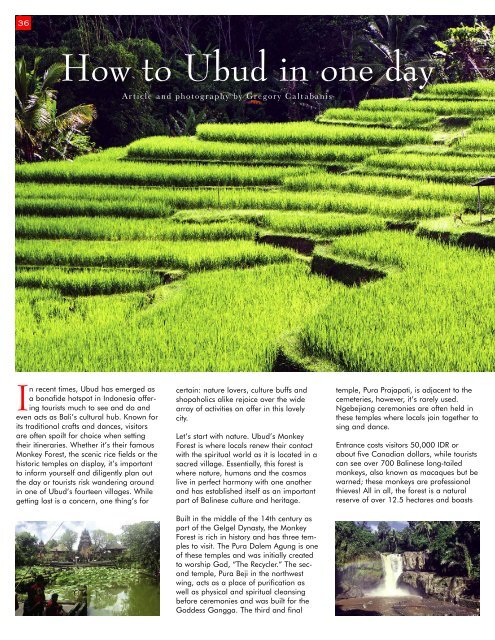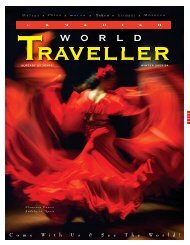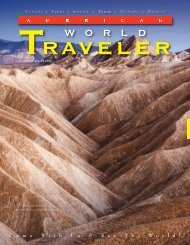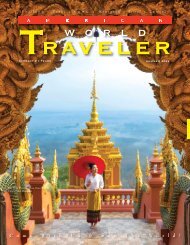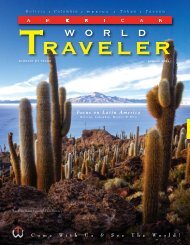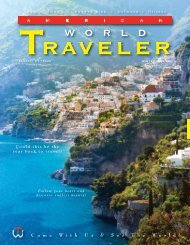Canadian World Traveller Spring 2018 Issue
Now in our 16th year of publishing, Canadian World Traveller explores the culture and history of worldwide destinations, sharing the adventure of discovery with our readers and motivating them to make their travel dreams a reality. Published quarterly, CWT helps sophisticated, independent Canadian travellers choose their next destination by offering a lively blend of intelligent, informative articles and tantalizing photographic images from our World’s best destinations, cruises, accommodations and activities to suit every traveller's taste.
Now in our 16th year of publishing, Canadian World Traveller explores the culture and history of worldwide destinations, sharing the adventure of discovery with our readers and motivating them to make their travel dreams a reality. Published quarterly, CWT helps sophisticated, independent Canadian travellers choose their next destination by offering a lively blend of intelligent, informative articles and tantalizing photographic images from our World’s best destinations, cruises, accommodations and activities to suit every traveller's taste.
Create successful ePaper yourself
Turn your PDF publications into a flip-book with our unique Google optimized e-Paper software.
36<br />
How to Ubud in one day<br />
Article and photography by Gregory Caltabanis<br />
In recent times, Ubud has emerged as<br />
a bonafide hotspot in Indonesia offering<br />
tourists much to see and do and<br />
even acts as Bali’s cultural hub. Known for<br />
its traditional crafts and dances, visitors<br />
are often spoilt for choice when setting<br />
their itineraries. Whether it’s their famous<br />
Monkey Forest, the scenic rice fields or the<br />
historic temples on display, it’s important<br />
to inform yourself and diligently plan out<br />
the day or tourists risk wandering around<br />
in one of Ubud’s fourteen villages. While<br />
getting lost is a concern, one thing’s for<br />
certain: nature lovers, culture buffs and<br />
shopaholics alike rejoice over the wide<br />
array of activities on offer in this lovely<br />
city.<br />
Let’s start with nature. Ubud’s Monkey<br />
Forest is where locals renew their contact<br />
with the spiritual world as it is located in a<br />
sacred village. Essentially, this forest is<br />
where nature, humans and the cosmos<br />
live in perfect harmony with one another<br />
and has established itself as an important<br />
part of Balinese culture and heritage.<br />
Built in the middle of the 14th century as<br />
part of the Gelgel Dynasty, the Monkey<br />
Forest is rich in history and has three temples<br />
to visit. The Pura Dalem Agung is one<br />
of these temples and was initially created<br />
to worship God, “The Recycler.” The second<br />
temple, Pura Beji in the northwest<br />
wing, acts as a place of purification as<br />
well as physical and spiritual cleansing<br />
before ceremonies and was built for the<br />
Goddess Gangga. The third and final<br />
temple, Pura Prajapati, is adjacent to the<br />
cemeteries, however, it’s rarely used.<br />
Ngebejiang ceremonies are often held in<br />
these temples where locals join together to<br />
sing and dance.<br />
Entrance costs visitors 50,000 IDR or<br />
about five <strong>Canadian</strong> dollars, while tourists<br />
can see over 700 Balinese long-tailed<br />
monkeys, also known as macaques but be<br />
warned; these monkeys are professional<br />
thieves! All in all, the forest is a natural<br />
reserve of over 12.5 hectares and boasts


